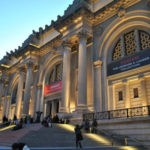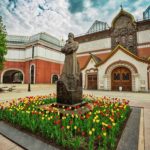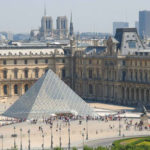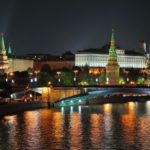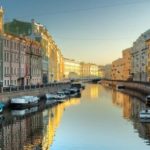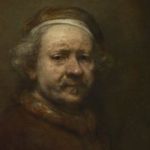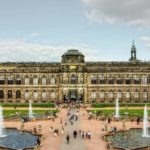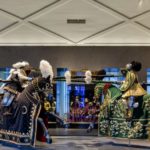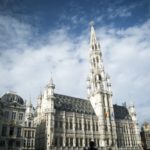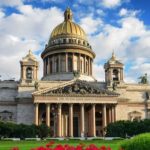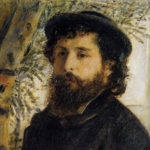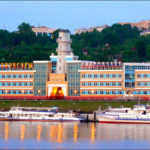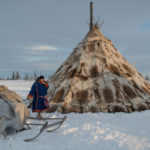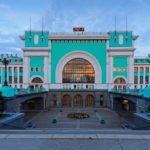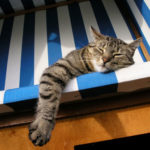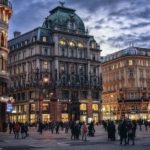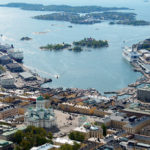Interesting facts about the Hermitage
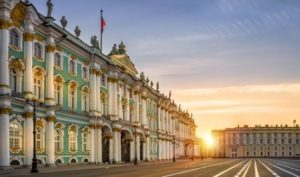 The amazing Hermitage Museum in St. Petersburg is one of the greatest treasures of Russia, and at the same time one of the most famous museums in the world. It presents the works of the greatest painters of the world, and in such huge quantities that it is impossible to inspect all of them even for a hundred visits. It is not surprising that this place attracts a huge number of visitors from various countries.
The amazing Hermitage Museum in St. Petersburg is one of the greatest treasures of Russia, and at the same time one of the most famous museums in the world. It presents the works of the greatest painters of the world, and in such huge quantities that it is impossible to inspect all of them even for a hundred visits. It is not surprising that this place attracts a huge number of visitors from various countries.
Since the 18th century, many cats have been living in the Hermitage, and quite officially, and they are even given an allowance. They help to fight with mice and rats that can spoil the priceless works of art.
Before the revolution, the museum was called the Imperial Hermitage. It is located in the building of the Winter Palace, on the banks of the Neva River.
He is in the top 20 most visited museums in the world.
For foreigners, the entrance to the Hermitage is much more expensive than for Russian citizens.
The first collections in the Hermitage were collected in a separate outhouse in the middle of the 18th century, but only a hundred years later they occupied the entire Winter Palace and 4 more buildings next door.
The Hermitage was founded on the orders of Catherine II.
There are about 3 million works of art and monuments of world culture in the halls and vaults of the Hermitage.
The museum complex consists of 350 halls. To just go through them all, you have to overcome as many as 24 kilometers.
To explore all the exhibits of the Hermitage, spending only 1 minute each, it takes about 11 years of life, if you devote this lesson to 8 hours a day.
In the Hermitage, 24 canvases of Rembrandt are stored in a separate room. This is the largest collection of his works outside his home country, the Netherlands.
Before the revolution, the Winter Palace was not only the seat of the Hermitage, but also the imperial residence.
The name of the museum complex comes from the French word meaning “place of solitude”.
In the Hermitage there are exhibits of tattooed human skin.
Until the middle of the 19th century, only noble nobles, who were close to the courtyard, could visit it.
Today, the Hermitage is in the top 5 most visited museums in Russia.
It is authentically known that Alexander Sergeevich Pushkin could not visit the Hermitage for a long time. As a result, he received a pass through the efforts of his friend, the poet Vasily Zhukovsky, who was a mentor to the future Emperor Alexander II.
In the 60s of the last century, a Dutch art historian accidentally discovered a canvas with a picture of a famous Dutch painter behind one of the cabinets in the Hermitage. He lay there, apparently, for many decades.
It is the Hermitage that is the largest art gallery in the whole world.
For centuries, the museum’s collection has been replenished with emperors who bought works of art in other countries.
In the early 1930s, the Soviet authorities sold out about 50 priceless exhibits to replenish the budget.
Between the Winter Palace and the Small Hermitage once was the personal garage of Emperor Nicholas II. The ruler loved personally caring for his collection of cars. Unfortunately, all of them were stolen by the Bolsheviks during the revolutionary events, and have not survived to this day.
One of the most interesting exhibits of the Hermitage is the card collection of General Ivkov. He collected more than 2 thousand decks from different countries.
In all of Russia, only in the Hermitage you can see canvases painted by Leonardo da Vinci.
Also here you can see a golden snuffbox with a dent on it. It was she who was killed by the Russian emperor Paul I.
176 sculptures are on the roof of the Winter Palace, the main building of the Hermitage. The architect placed them there to hide the chimneys from the townspeople.
Different emperors occupied different chambers in the Winter Palace. Nicholas I, for example, was content with a modest apartment on the third floor, and even slept on a folding bed.
Previously, the Hermitage buildings were pink, yellow and red. They were painted in the usual green color after the end of the Second World War.

